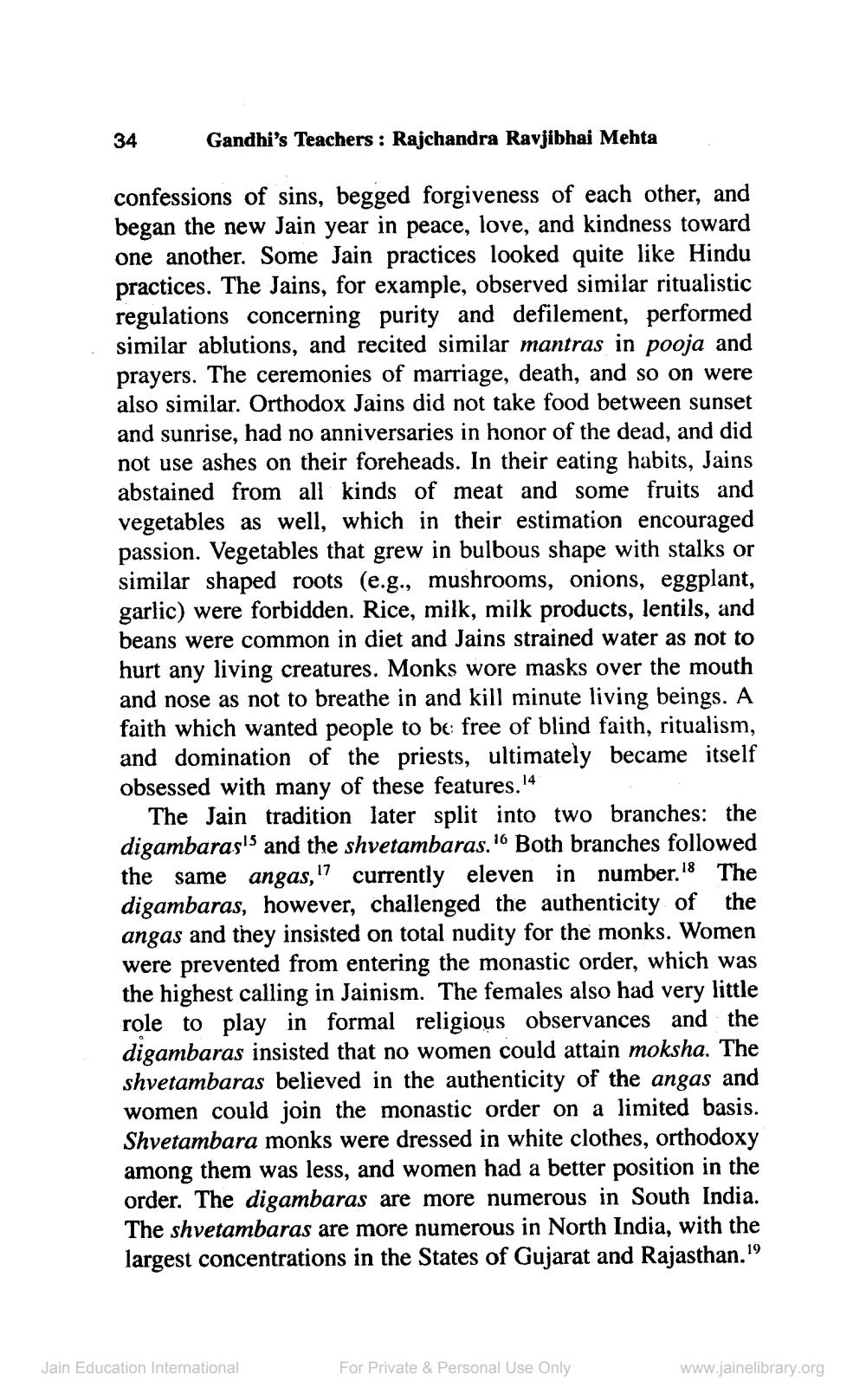________________
34
Gandhi's Teachers : Rajchandra Ravjibhai Mehta
confessions of sins, begged forgiveness of each other, and began the new Jain year in peace, love, and kindness toward one another. Some Jain practices looked quite like Hindu practices. The Jains, for example, observed similar ritualistic regulations concerning purity and defilement, performed similar ablutions, and recited similar mantras in pooja and prayers. The ceremonies of marriage, death, and so on were also similar. Orthodox Jains did not take food between sunset and sunrise, had no anniversaries in honor of the dead, and did not use ashes on their foreheads. In their eating habits, Jains abstained from all kinds of meat and some fruits and vegetables as well, which in their estimation encouraged passion. Vegetables that grew in bulbous shape with stalks or similar shaped roots (e.g., mushrooms, onions, eggplant, garlic) were forbidden. Rice, milk, milk products, lentils, and beans were common in diet and Jains strained water as not to hurt any living creatures. Monks wore masks over the mouth and nose as not to breathe in and kill minute living beings. A faith which wanted people to be free of blind faith, ritualism, and domination of the priests, ultimately became itself obsessed with many of these features. 14
The Jain tradition later split into two branches: the digambarasis and the shvetambaras. Both branches followed the same angas,'? currently eleven in number. 18 The digambaras, however, challenged the authenticity of the angas and they insisted on total nudity for the monks. Women were prevented from entering the monastic order, which was the highest calling in Jainism. The females also had very little role to play in formal religious observances and the digambaras insisted that no women could attain moksha. The shvetambaras believed in the authenticity of the angas and women could join the monastic order on a limited basis. Shvetambara monks were dressed in white clothes, orthodoxy among them was less, and women had a better position in the order. The digambaras are more numerous in South India. The shvetambaras are more numerous in North India, with the largest concentrations in the States of Gujarat and Rajasthan."9
Jain Education International
For Private & Personal Use Only
www.jainelibrary.org




